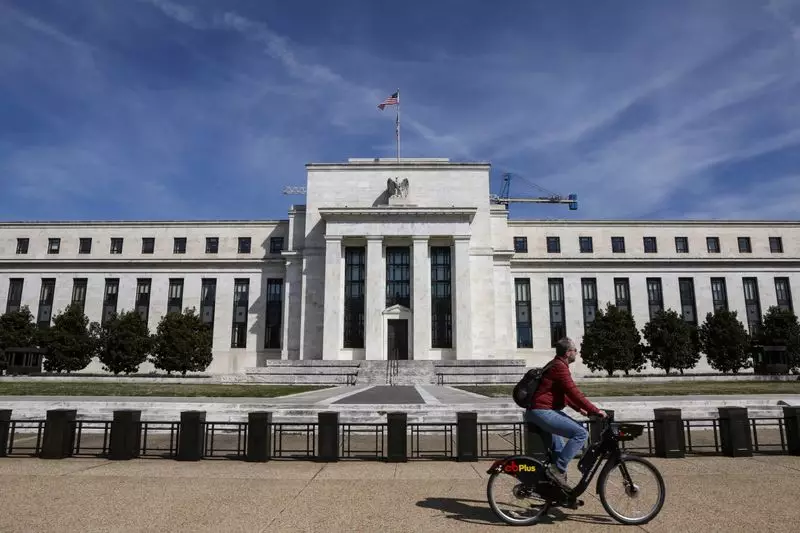The Federal Reserve’s approach toward interest rates remains a focal point of discussion among economists and market analysts, particularly in the context of evolving economic indicators and political influences. As projections for 2025 emerge, a more nuanced understanding of Fed policymakers’ views—particularly their categorization as either “doves” or “hawks”—is vital for gauging the potential trajectory of monetary policy.
Interest Rate Trajectories and Economic Conditions
It is becoming increasingly clear that the Federal Reserve anticipates a more conservative route regarding interest rate cuts in 2025. In stark contrast to 2024’s aggressive full percentage point reduction, the Fed currently projects a far more measured approach, highlighting a host of economic factors that complicate the cutting landscape. Specifically, slower strides toward the Fed’s enduring 2% inflation target paired with an unwaveringly robust labor market create a balancing act that the central bank is navigating with caution.
Against this backdrop, the uncertainty surrounding potential legislative changes, including proposals for tax cuts and tariffs as a result of Donald Trump’s approach in his second presidential term, adds layers of complexity to monetary policy. The convergence of market factors necessitates that Fed policymakers maintain a delicate equilibrium between fostering economic growth and controlling inflation.
Doves vs. Hawks: A Divided Fed
Within the Federal Reserve, the terms “dove” and “hawk” serve as shorthand to encapsulate divergent philosophies regarding monetary policy. Doves tend to prioritize labor market health and may advocate for rapid rate cuts to spur growth, while hawks express concern over inflation and prefer a more tempered approach. This ideological split is not merely academic; it has significant implications for monetary policy direction.
In 2025, Fed Chair Jerome Powell and other key figures have indicated a tendency towards a more cautious stance, embodying a “dovish centrist” approach that recognizes the importance of current economic conditions while hinting at potential adjustments based on future developments. This indicates a growing acknowledgment of the unpredictability surrounding economic policy, aligning with comments made by other Fed members who deem it essential to avoid presupposing the impacts of the incoming administration’s strategies.
Recent remarks from a variety of Fed policymakers illuminate this ideological divide more clearly. For instance, Lisa Cook’s outlook reflects a strategic caution, emphasizing the need for careful deliberation regarding further cuts. Meanwhile, Austan Goolsbee mentioned the necessity to monitor economic overheating, suggesting pressures exist but are not yet conspicuous.
Neel Kashkari’s recognition of the persistent risks helps underline the nuanced nature of financial policymaking today, where indicators can shift unexpectedly, and previous forecasts may quickly become outdated. The churning nature of economic data reinforces the imperative for a thoughtful and adaptable monetary policy framework.
As the Federal Reserve settles on its trajectory, it must balance the signals from its monetary policy objectives against the broader economic environment shaped by both domestic influences and international factors. The remarks from figures like Susan Collins, who affirm the economy’s position, suggest a more optimistic outlook but still harbor caution for future escalations of risk.
The impending changes in economic policy tied to the political climate cannot be ignored. The discourse surrounding Trump’s administration and its potential impacts on fiscal measures—such as tax reforms and trade policies—places added pressure on the Federal Reserve to adapt swiftly and soundly. The interplay between fiscal and monetary policies becomes a crucial consideration as Fed members deliberate on how to best ensure economic stability against a backdrop of potential unpredictability.
Ultimately, the intersection of political decisions with economic outcomes fosters a climate of speculation among Fed officials. Observing how these dynamics unfold will not only provide insight into future interest rate settings but will also illuminate broader economic trends that will shape the U.S. financial landscape for years to come.
As stakeholders in the financial ecosystem, from investors to policymakers, continue to dissect the Fed’s insights, it becomes crucial to adopt a critical lens when considering these projections. The path forward remains uncertain, with Geopolitical factors, labor market pressures, and inflation targets converging to challenge the traditional frameworks of monetary policy. Moving into 2025, the Federal Reserve stands at a crossroads, with decisions made today poised to have repercussions for the broader economy, demanding vigilance and adaptability in response.

